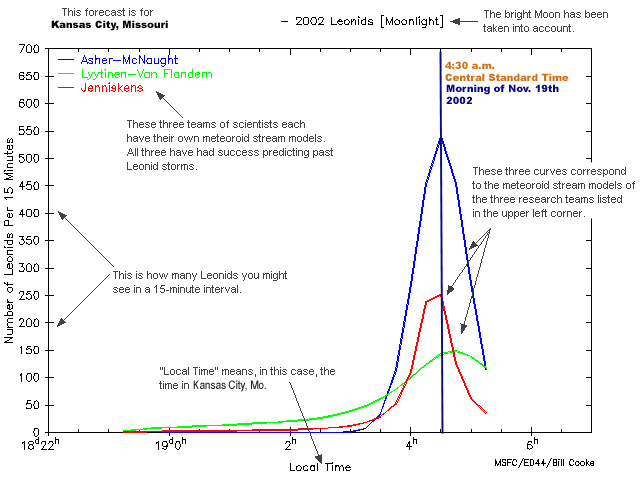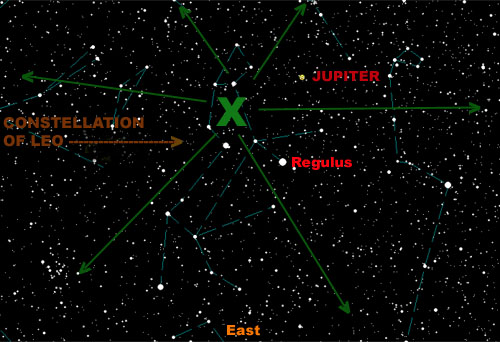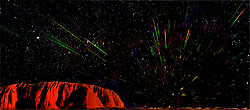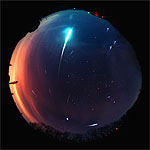Leonid Meteor Shower 2002

If some of the predictions are correct, we could be in for a meteor shower that will rival the great storm of 1966.
Despite a full moon, chances are still excellent that we could see hundreds,
if not thousands of meteors during the main peak on the morning of November 19th.
|
The experts are predicting that there will be at least 2 major peaks to this years Leonid Meteor Shower. As the first big peak begins (in Europe) observers in the the Midwest may see nice long 'earth-grazer' meteors from that peak, starting around 10.00 pm CST on the evening of November 18th. |
The second big peak will favor North America and the Midwest! Anyone interested in joining Vic & Jen at the ICSTARS Ranch are welcome to come. |
|
The meteor expert team of Robert McNaught and David Asher predict the estimated peak for the greater Kansas City area will occur shortly after 4:30 am CST on the morning of November 19th. Starting about 2 a.m. rates should start increasing from 20-30 meteors every 15 minutes to a possible high of more than 300 meteors per 15 minute period during the peak. These high rates will begin to drop off rapidly as morning twilight begins. Thes rates also take into account that a nearly full moon will still be in the sky and keep the viewer from seeing many of the fainter meteors. |
What time does morning twilight start for the Kansas City area on the 19th?
For the morning of Tuesday, November 19, 2002, Central Standard Time, astronomical twilight begins at 5:34 am.
Nautical twilight begins at 6:06 am. Civil twilight begins at 6:38 am. Sunrise occurs at 7:05 am .
To get the times for twilight in your town... go to U.S. Naval Observatory site at:
http://aa.usno.navy.mil/data/docs/RS_OneDay.html

The nearly full moon will be in the western sky by the peak on the morning of the 19th, but will still be bright enought to interfer with seeing some of the fainter meteors.
Where to look????

For the first peak (just before midnight on the 18th) face due east. As the peak hits Europe the radiant (where all the Leonid meteors appear to come from in the sky) will just be rising for Midwestern observers. Most of the meteors we will see during this time period will be some of the bright "Earth-grazers". These meteors are almost missing the Earth and skimming off the upper regions of our atmosphere. This will make them appear somewhat slower and they will last much longer - possibly 3-5 seconds!
For the main show - the second peak that favors the Midwest - the constellation of Leo will be much higher in the eastern sky and the moon will be much further out of the way to the west. Your best bet will still to be facing east and use something like a row of trees or a house to block the moonlight. Remember, the fewer lights the better. Be sure and dress warmly and take along plenty of drinks and snacks. Comfortable lawn chairs or even chaise lounge chairs are perfect for observing.

